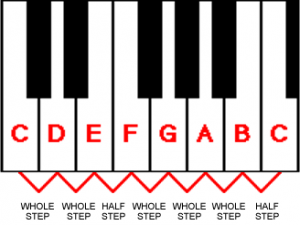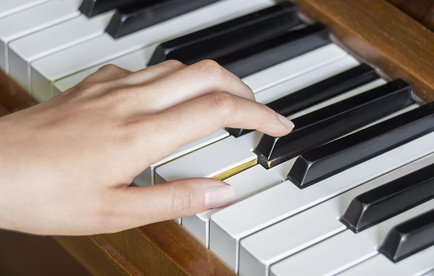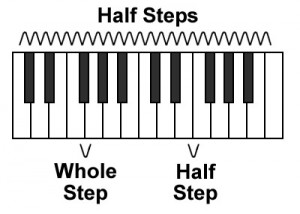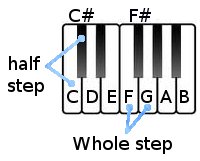Today I’m going to teach you how to sing the major scale in tune using solfege syllables. I’ll even teach you how to play it on the piano (or virtual keyboard) so you can practice by yourself! Check out this quick & easy tutorial video.
C Major Scale With Solfege Syllables
As singers, we use the major scale (most often with solfege syllables) in ear training and sight singing exercises. Over half of the songs that you love to sing have melodies based on the major scale. If you ever have problems singing in tune, ear training with this scale is a great way to improve.
The major scale is a pattern of half steps and whole steps. A half step is the smallest distance in our western music system. It is the distance between any pitch on the piano and its direct neighbor. One whole step = 2 half steps.
If you start anywhere on the keyboard and play this pattern- WWHWWWH (W=whole step, H=half step), you will be playing a major scale. Here is an example in the key of C.

Here’s another example, this time in the key of D. The notes in this scale are D-E-F#-G-A-B-C#-D
How To Practice
Play and sing the major scale in C major. The two notes where singers tend to go out of tune the most are Fa (F) and Ti (B). The tendency is to aim too high going from Mi up to Fa ( a half step) and aim too low for Ti leading into Do (also a half step).
Sing the scale a capella except for Mi-Fa and Ti-Do. Hit these notes for yourself on the keyboard ( in C: E-F and B-C). If you notice any other note that is slightly out, play that for yourself as well. With practice, you should be able to sing the major scale totally in tune without the help of the piano.
This practice will translate into everything you sing, improving your ear and pitch.
Can’t tell if you are singing in tune? Record yourself as you sing and play the notes. Listen back and you should be able to hear things that you weren’t aware of while you were singing. Listening to a recording of yourself is a great way to spot pitch & tone problems you might not otherwise be aware of. It’s like hearing what everyone else hears when you sing.
Don’t be too hard on yourself if you don’t love what you hear! Even good singers don’t sound good all the time, especially in practice.
Need help with the names of the notes on the piano? Check out this helpful article- Piano Keys- A Simple Guide To Learning Notes On The Piano
Enjoy your practice and see you next time!










Leave A Response